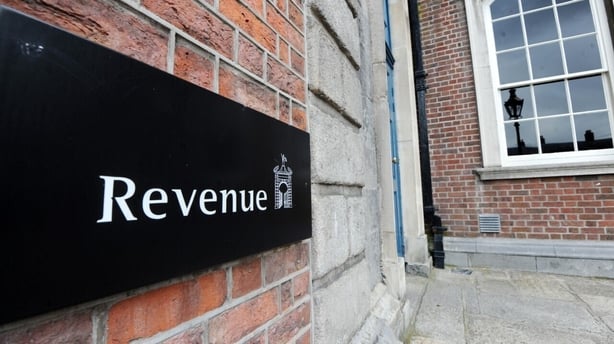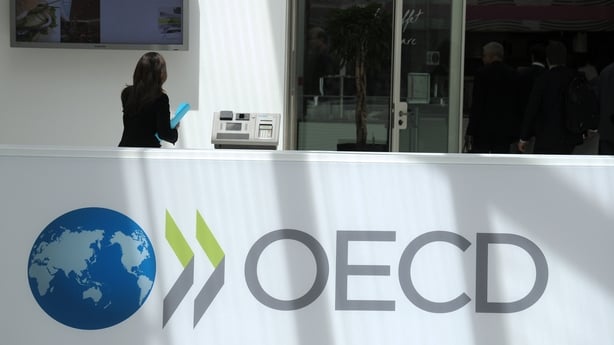US President Joe Biden's recent visit led to much discussion and dissection about the real and imagined Irelands on both sides of the Atlantic.
But this week, from the unlikely source of Revenue, we were treated to a glimpse of a uniquely Irish-American universe so otherworldly it has been known to both terrify normally sober economists and make the most fiscally prudish positively skittish.
In an addendum to its annual report, Revenue published an analysis of corporation tax payments and returns for 2021 and 2022.
In cold hard cash terms, that was ten cheques written for just over €13 billion.
This is the 'concentration risk’ which the Department of Finance has been warning about.
In simple terms, it is like saying we have too many eggs in too few baskets.
If this tax were to disappear or significantly reduce, we would have a big hole in our public finances.
The eggs and baskets are disturbingly in the sub-dozen or even sub half dozen category of concentration risk.
Manufacturing
Manufacturing accounted for just over 77% (€5.7billion) of the 48% (€7.3billion) increase in corporation tax last year.
When the manufacturing sector profit is broken down further, about half is attributed to 'ICT manufacture'.
There are not too many companies located in Ireland involved in ICT manufacture.
Just under half is attributed to 'chemical and pharma manufacture.’
Again, not a whole lot of companies involved in that business either. That is how concentrated the bulk of the Exchequer’s good fortune is.
The report also highlights that the profits made in the manufacturing sector grew by 41.4% in 2021.

"Revenue's report calculates there were 825,000 people employed in foreign multinationals in 2021 (a third of the workforce) which collectively paid €13.3 billion, or 52%, of the combined totals of income tax, USC and PRSI"
'Booms don't last forever'
It does not take a devotee of the business cycle theory to sense that profits at this scale cannot last forever.
We have been through a boom in IT and pharma, a lot due to a lucky bounce from Covid. But booms do not last forever.
Revenue's report also undermines the narrative that Ireland’s corporation tax largesse only proves our economy is really an elaborate tax arrangement.
Yes, tax structures are obviously important and offer a big attraction to multinationals that choose to locate here.
But their investment in the economy is not just a brass plate and some generous professional fees.
Revenue’s report calculates there were 825,000 people employed in foreign multinationals in 2021 (a third of the workforce) which collectively paid €13.3 billion, or 52%, of the combined totals of income tax, USC and PRSI.
Corporation tax returns have been steadily increasing since the middle of the last decade. They have gone through the roof in recent years, almost doubling since 2020.

Turbo-charged profits
Ironically, reforms introduced by the Trump administration in 2017 which tried to unlock some of the billions held offshore by US multinationals, combined with other reforms brokered by the Organisation for Economic Co-operation and Development (OECD), seem to have turbo-charged the profits routed through Ireland and consequently the tax paid here.
In the very short term, the increase in the minimum rate of corporation tax next year, which is part of the OECD reforms, could very well see Ireland collect even more next year.
There is another theory that tax allowances on intellectual property which was "imported" by multinationals into Ireland following the Trump reforms, have now all expired leading to higher taxes being paid on the profits attributable to the patents on various software and other products.
The second plank of the OECD deal, which would see bigger countries getting the right to tax a bigger slice of the profits made by large multinationals, is not yet agreed.
That is the part of the deal that could see the amount of tax collected by Ireland fall.
The Department of Finance’s estimate of this at €2billion is wildly out of date. It will be higher than that.
However, as the US quickly slips into its election cycle, the prospect of this part of the deal being completed anytime soon is dimming and with it the danger in the short term of Ireland’s tax bounty abruptly disappearing.
The OECD recently appointed a US national, Manal Corwin, to replace Pascal Saint-Amans as head of its tax reform operation.
Ms Corwin took up her role this month. We will have to wait and see if her appointment acts as a catalyst for a process which seems to have stalled.
In the meantime, with little obvious sign of any imminent slowdown in the corporation tax bonanza, the political challenge here to use this windfall wisely will intensify.






